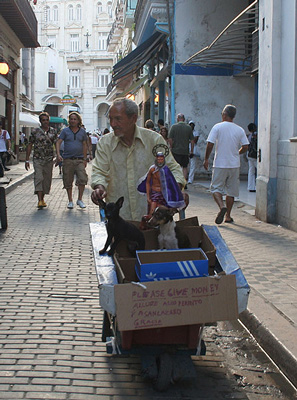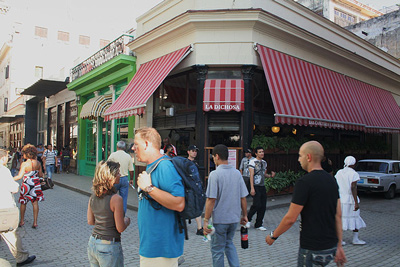The Cuba of My Mistreatment
Verónica Vega

HAVANA TIMES — What would humans be like without the ability to “edit” their memory, preventing neurosis and depression? Although, according to psychologists and psychiatrists, many mental disorders are caused by wounds buried in the depths of the subconscious.
How can you tell the difference? What should we do with what affects us? Imitate those internet messages with beautiful photos accompanied by therapy that consists of smile and pass it on?
I have tried it, believe me, and it doesn’t always work. Like a few days ago when I went out with my husband to meet up with two friends and Havana Times colleagues, Irina Pino and Ernesto Pérez Chang.
We met in Old Havana, and we went to a privately owned bakery located on Sol Street. While we were there, everything was peaceful and pleasant: the service by the young waiters, the flavor of the tea, the delicious cookies. We spoke freely, without suspicious looks or pressure from some customer waiting for our seats.
Now, once outside the magic circle, the country changed. In the Fayad Jamís bookstore, Ernesto asked an employee, who he knew, if we could use the bathroom. He kindly agreed. However, when we came out of the restroom, a man sullenly asked if we had asked for permission, and then, who had given it to us. While we explained, we felt like disobedient children, or worse, like delinquents.
Later, trying to get change for a simple 10 CUC bill at a cafeteria on Obispo Street, my spouse waited for so long at the counter he wondered if he was invisible. I intervened, and got the waiter to pay me attention, but who blurted out that a coca cola there cost 50 cents more there than anywhere else.
At another cafeteria, I thought about buying an ice cream and they dryly told us that they didn’t have change. In a State run sweets shop they had change, but the sweets were disappointing. They were not the same as the ones we had there a few months ago. Irina demanded that they exchange the coffeecakes for ones similar to what was in the display. They changed them, with an attitude as if counting to a thousand in order to bear the customer’s rudeness.
We went to the Wilfredo Lam gallery with the hope of seeing the recent exposition of Tomás Sánchez, only to find out that it was closed because there had been no electricity. What did that matter if the lights had already been restored and it was still an hour until closing time?The only option given was to come back the next day.

We ambled down Obispo Street, this artery turned into an old stage of the past (without melancholy). We saw how a man charges for forcing his dog not to move for hours while wearing a suit, sunglasses, and a hat. A Siamese cat also confined to motionlessness looked as us from its pale blue of its big eyes, and the owner, dressed in an old-time costume, shoots a deadly look at anyone who tries to touch the animal without money in their hand.
People with statues of San Lázaro asking for change and live puppies to soften up the hearts of the passersby; a poorly dressed man forces a white rat to balance on a mutt’s neck, up and down Obispo.
All under a relentless sun. Ernest went on his way and we went with Irina to where she would catch a collective taxi. Near the remains of the wall that encircled the city centuries ago, I was overwhelmed by the sound of horns, thunderous engines, vendors shouting (not hawking), desperately pushing their merchandise. Around, faces of impressive hardness.
On the route 400 but trip, with one of those young drivers who you can’t figure out how he got approved for this occupation, you feel like you on a roller coaster (minus the fun). You jerk backward, forward, crash into someone, grip with all you might on the turns to avoid crashing, and the sudden changes in speed churn your stomach.
When I got home, I tried to think that I had a beautiful day with my friends. I edited and reconstructed, before the reality became concrete. But the blows, the hardness, the mistreatment outlived the bathroom, the clean clothes, the happy comments, and even outlived the voluntary destruction of the images.





